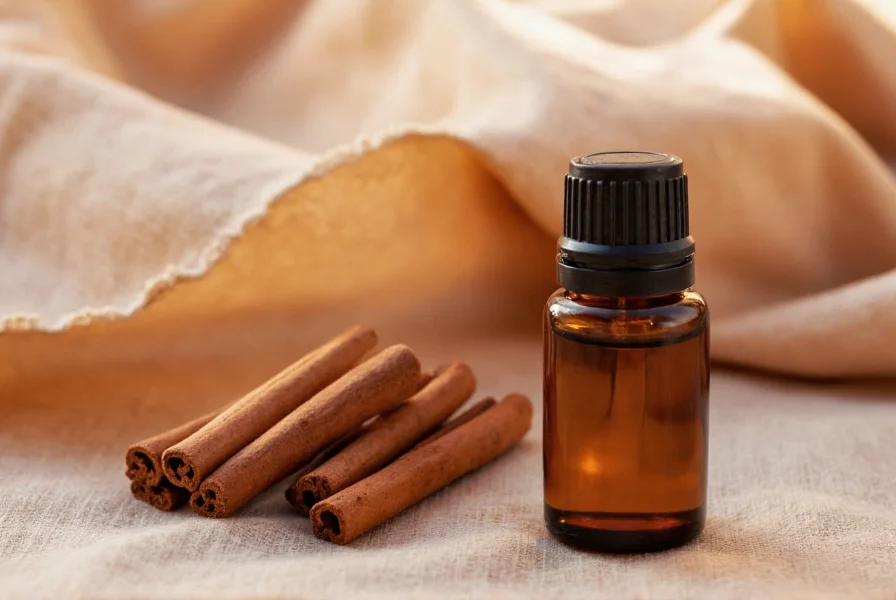Cinnamon spice essential oil represents one of nature's most potent botanical extracts, yet it's frequently misunderstood. While culinary cinnamon spice (ground bark) safely enhances recipes, the essential oil variant demands careful handling due to its concentrated chemical composition. This distinction between kitchen spice and therapeutic oil forms the foundation of safe usage.
Understanding Cinnamon Essential Oil Varieties
Two primary types exist in the essential oil market, each with distinct chemical profiles:
| Type | Source Plant | Primary Compound | Maximum Safe Dilution |
|---|---|---|---|
| Cinnamon Bark Oil | Cinnamomum cassia | Cinnamaldehyde (60-90%) | 0.5% for adults |
| Cinnamon Leaf Oil | Cinnamomum verum (Ceylon) | Eugenol (70-85%) | 2% for adults |
The cassia variety dominates commercial availability due to lower production costs, but contains significantly higher cinnamaldehyde levels that increase irritation risks. Ceylon cinnamon oil, while less common, offers a gentler profile preferred for therapeutic applications. Understanding these cinnamon cassia vs ceylon essential oil differences proves critical for safe usage.
Evidence-Based Benefits and Applications
Research published in the Journal of Agricultural and Food Chemistry confirms cinnamon essential oil's potent antimicrobial properties against common pathogens. When properly diluted, it demonstrates effectiveness against:
- Foodborne bacteria including E. coli and Salmonella
- Common fungal strains like Candida albicans
- Respiratory tract microbes when used in diffusion
For cinnamon essential oil immune support applications, aromatherapists recommend diffusion rather than internal consumption. A 2022 Phytotherapy Research review noted its potential to stimulate white blood cell activity when inhaled, though human clinical trials remain limited. The cinnamon essential oil antimicrobial properties make it valuable for natural surface cleaning solutions when combined with castile soap and water at 1-2% concentration.
Safety Protocols and Proper Usage
Improper use of cinnamon spice essential oil causes more adverse reactions than nearly any other common essential oil. The North American Herb and Spice Safety Council reports over 200 annual cases of chemical burns from undiluted application. Essential safety protocols include:
- Always perform a patch test 24 hours before full application
- Maintain strict cinnamon essential oil dilution ratio of 0.5% for facial products and 1-2% for body applications
- Never apply near mucous membranes or on broken skin
- Avoid use during pregnancy or with children under 6 years
For topical applications requiring how to use cinnamon essential oil safely, blend with carrier oils like fractionated coconut or jojoba oil. A standard safe dilution equals 1-2 drops per teaspoon of carrier oil. Internal consumption remains controversial—while some traditional medicine systems use微量 amounts, modern aromatherapy associations generally discourage ingestion due to potential liver toxicity and mucosal damage.
Quality Assessment and Product Selection
Selecting therapeutic-grade cinnamon essential oil requires careful evaluation. Reputable suppliers should provide:
- GC/MS (gas chromatography/mass spectrometry) test results
- Clear botanical identification (Cinnamomum cassia vs verum)
- Harvest location and distillation methods
- Extraction type (bark vs leaf)
Be wary of products labeled simply as "cinnamon oil" without specifying plant part or species. The cinnamon bark essential oil benefits differ significantly from leaf-derived versions, particularly regarding skin sensitivity. Third-party testing verification remains the most reliable indicator of product quality and purity.
Common Misconceptions Debunked
Despite popular claims, scientific evidence does not support several widespread beliefs about cinnamon essential oil:
- Blood sugar regulation: While culinary cinnamon shows modest effects, essential oil concentrations lack human studies for diabetes management
- Weight loss: No credible research supports topical application for fat reduction
- Antiviral protection: Laboratory studies show in vitro effects, but human respiratory protection claims remain unsubstantiated
These cinnamon essential oil misconceptions often originate from misinterpretation of preliminary research or conflation with culinary spice benefits. Always distinguish between ground cinnamon spice applications and essential oil usage.
Conclusion: Responsible Integration into Wellness Practices
Cinnamon spice essential oil offers valuable therapeutic properties when used responsibly. Its potent antimicrobial effects make it a worthwhile addition to natural cleaning solutions and aromatherapy practices. However, respect for its chemical potency must guide all applications. By understanding the critical differences between culinary cinnamon and its essential oil counterpart, maintaining proper dilution protocols, and selecting quality products, users can safely incorporate this powerful botanical extract into their wellness routines.
Frequently Asked Questions
Can I use cinnamon essential oil directly on my skin?
No, direct application causes chemical burns in most people. Always dilute to 0.5-2% concentration with carrier oil. Cinnamon bark oil requires lower dilution (0.5%) than leaf oil (2%) due to higher cinnamaldehyde content. Perform a patch test 24 hours before full application.
What's the difference between cinnamon spice and cinnamon essential oil?
Culinary cinnamon spice is ground bark containing 1-3% essential oil compounds. Cinnamon essential oil is a 100% concentrated extract containing 60-90% cinnamaldehyde, making it 30-100 times more potent. Never substitute essential oil for culinary spice in recipes.
Is cinnamon essential oil safe for diffusing around children?
Use extreme caution. Children under 6 should avoid cinnamon oil diffusion due to respiratory sensitivity. For older children, limit diffusion to 15-20 minute intervals with adequate room ventilation. Cinnamon leaf oil presents fewer risks than bark oil for diffusion purposes.
How should I store cinnamon essential oil to maintain potency?
Store in dark glass bottles away from light and heat. Ideal conditions are 40-70°F (4-21°C) with minimal temperature fluctuations. Properly stored, cinnamon essential oil maintains potency for 2-3 years. Refrigeration extends shelf life but may cause temporary cloudiness that clears at room temperature.











 浙公网安备
33010002000092号
浙公网安备
33010002000092号 浙B2-20120091-4
浙B2-20120091-4